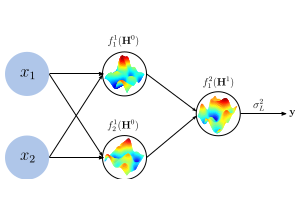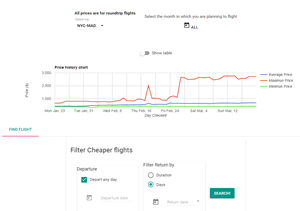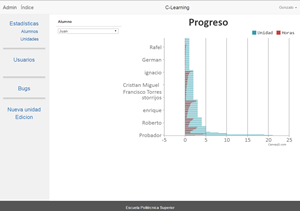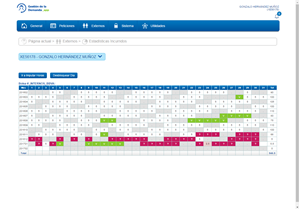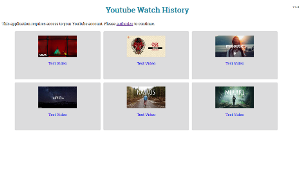Instituto de ingeniería del conocimiento (IIC)
Data Scientist
As a data scientist in the Health and Energy Predictive Analytics department, I carried out a wide
range of Data Science and Data Engineering tasks. Some of the most important projects that I
participated in:
• Bisepro
Bisepro is a product developed in collaboration with the Public Health Service of the Balearic
Government. We worked with hospitals in Spain to
collect EHR data from patients to build a predictive model to detect sepsis. The objective was to
beat the hospital's
rule-based system which produced a substantial amount of False Positives.
Furthermore, we developed an ETL capable of handling real time data from multiple sources within
the
hospital. Part of the architecture is described publicly (ELK Stack) while part
of it is under NDA.
The project was
completed and deployed at "Hospital Universitario Son Llàtzer"
(Mallorca), obtaining 0.95 AUC and
successfully increasing the Specificity by 21% versus the previous system. It was later expanded to
other hospitals.
• Bisepro - COVID
As the pandemic hit, we started a project to detect respiratory failure due to COVID-19. This
required to build a model with a small amount of data using the same sources as the original
Bisepro. We built an ensemble that also included rule-based models achieving 0.958 AUC. Due to the
low amount of data the model had high specificity but low sensitivity.
The model was deployed at the "Hospital Universitario 12 de Octubre" in Madrid (one of the biggest
in Spain).
The research and implementation was published in
the paper:
Pedrera Jiménez, Miguel & Cruz-Rojo, Jaime & Martínez, Alvar & Hernandez-Munoz, Gonzalo &
Serrano-Garcia, A & Calle-Romero, M & Garcia-Hinojosa, C & Serrano-Balazote, Pablo. (2022).
DETECCIÓN PRECOZ DE COMPROMISO RESPIRATORIO EN COVID-19 MEDIANTE IA: PROCESO DE IMPLANTACIÓN EN
HCE.
• Project under NDA
This project, requested by one of the biggest health insurance companies in Spain, reduced the wait
time for
patients that requested medical procedures. I was the leading data scientist of the project and in
charge (along with the technical leader of the department) of taking the right decisions to complete
it. This model was built upon million of rows of data from past authorized and denied procedures and
entailed considerable difficulty. Some of the problems we faced:
- A highly imbalanced dataset with almost 95% of the records belonging to just one class.
- Millions of data points (sometimes reaching 100k daily rows).
- Most variables were categorical variables and many of them had a high cardinality which
prevented
us from using widely used techniques (as one hot encoder). We researched and applied creative
techniques such a Target
Encoder variations.
- Data was geographically correlated with underpopulated areas of Spain having patterns that
differed from big cities but at the same time without enough data to construct models for those
areas.
• Project under NDA
A small company that was developing a model for
the automatic recognition of early stage colorectal cancer from blood tests requested
guidance and consulting services to improve their results.
The main difficulties with the dataset were that the number of variables (columns) was too high but
there were not enough data points (rows). Additionally, the dataset was divided in cohorts and each
cohort had different processes to handle the blood samples which produced different distributions
for each cohort.
We wrote a report with recommendations, most notably, we suggested new train and validation
techniques that trained the model with some of the cohorts but tested the model with cohorts that
were not used previously. That way we were able to guarantee that the chosen model was generalizing
properly instead of overfitting to some of the cohorts (the one with more data).
See also:
https://cordis.europa.eu/project/id/957099
https://amadix.com/prevecol/
https://cordis.europa.eu/article/id/435694-non-invasive-test-for-colorectal-cancer-detection
• Project under NDA
We built a collection of tools to perform NER over EHR text from physicians. The tool was able to
extract HPO terms from a given text input. This helped doctors to
perform diagnoses on patients with rare diseases by grouping patients with similar terms. It also
allowed to perform
semantic search on their unstructured data. In addition, the HPO ontology can be connected to other
ontologies such as OMIM and ORPHA ontologies enabling genetics research.
Some of the languages and tools that I used in projects at IIC: Python, Kafka, Spacy, Flask, Docker,
AWS, Elasticsearch, ELK Stack, MongoDB, PostgreSQL (and Oracle), Swagger, DVC, ClearML.
Universidad Autónoma de Madrid (UAM)
Machine Learning Research Scientist
I developed a new machine learning method for Deep Gaussian Processes (DGPs) using Monte Carlo
methods and approximate inference techniques.
In order for this new method to be suitable for big data
problems I implemented one of the sparse approximations for GPs, reducing the computational
complexity.
I also designed and managed
the experiments pipeline to be able to compare it with other state of the art models.
The resulting paper was accepted and published in the European Conference on Machine
Learning (ECML
2020).
Another part of my research included presenting papers in group seminars about the
current
state of the art for probabilistic methods.
During this time I worked with (some of) the following technologies and frameworks: Python,
Sacred, MLflow MongoDB, Tensorflow, Keras, Scikit-learn, Theano, gpflow.
BBVA
Full stack developer
I designed and implemented a web-based application to analyze and control statistics and KPIs
about internal data from the company.
I also developed a Python desktop application to analyze, parse and process information
from multiple auto-generated reports from MicroStrategy.
I used these technologies: Python, JavaScript, PHP, SQL Server, Google Script.
